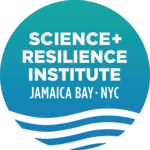Members of the project team behind “Measuring Success,” an expansive, collaborative effort to monitor natural and nature-based shoreline features across New York State, have published a new research paper that adds lessons and insights to the growing body of literature on putting resilience into practice.
The paper, titled “Operationalizing Resilience: co-creating a framework to monitor hard, natural, and nature-based shoreline features in New York State,” was recently published in the academic journal Ecology and Society. In it, the authors argue that “Interdisciplinarity, co-creation, pragmatism, multi-scalar applicability, and policy relevance are critical principles … to facilitate the implementation of nature-based solutions,” a growing area of interest as we adapt to climate change-induced sea level rise. The research provides a detailed examination of the co-creative process and shares critical lessons about applying resilience thinking in some of the world’s most urbanized watersheds.
“Translating resilience concepts into practice is difficult but necessary as we struggle with the impacts of rising seas and climate change. We hope that the lessons we learned in doing this work will help others address similar problems and challenges,” said Dr. Brett Branco, one of the paper’s co-authors and Director of the SRIJB.

From 2017 – 2020, the Science and Resilience Institute led “Measuring Success,” an endeavor to design and pilot a framework to monitor shoreline features across New York State. The ‘co-creative’ process utilized extension networks established by New York Sea Grant in each of the four coastal regions of New York State (Long Island, NY Harbor, Hudson Valley, and the Great Lakes) to bring together shoreline stewards, practitioners, agencies, scientists and other stakeholders. The framework provides parameters, indicators and field protocols for various groups to collect and store standardized evidence about shoreline performance to help managers, stewards, and agencies make evidence-based decisions that build coastal resilience to stressors and threats.
The paper concludes the first phase of framework development. SRIJB will continue to support the deployment of the framework monitoring protocols in Jamaica Bay and across NYC, while exploring ways to better connect the shoreline data to science-driven coastal decision-making.
‘Measuring Success’ was completed with support from NYSDOS and NYSERDA. Authors affiliations represent a sub-section of the project team, including: The New School, NYC Dept of Parks and Recreation, SCAPE Landscape Architecture, New York Sea Grant, and the CUNY Advanced Science Research Center. Katinka Wijsman, the paper’s lead author, is a former research associate at the SRIJB and is a PhD candidate in Politics at the New School’s Urban Systems Lab.






